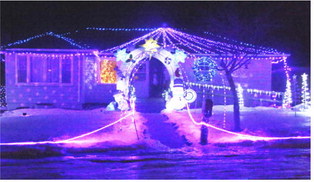MonDak Cropping Seminar Includes Information On Grasshopper Control


The MonDak Cropping Seminar, held in Wolf Point, featured a presentation by Valley County Extension agent Shelley Mills regarding grasshopper management on Feb. 20.
The seminar, formerly called MonDak Pulse Day, was planned by the northeast group of Montana State University Extension agents. Event sponsors were Pro-Coop Ag Center and Ag Partners, LLC. Mills explained that grasshopper outbreaks occur when weather conditions are warm and dry. Outbreaks usually last one to four years and occur usually about every four to 10 years.
Warm and dry conditions create an environment for faster development, less susceptible to disease and natural enemies, lower mortality and better for the laying of more eggs.
By contrast, cool and damp conditions result in slower development. Disease susceptibility increases and fewer eggs are laid. In addition, there is more forage produced for both cattle and grasshoppers in wet years.
Mills noted that grasshoppers can eat six times their weight. With the high amount of adult grasshoppers in the area during the past couple of years, that’s a big loss. Adult grasshoppers can travel between one and three miles a day.
Mills said growers need to decide if it makes economic sense to treat grasshoppers on their property. She said treatment should be considered if there are 15 or more adult grasshoppers per square yard. When making such a decision, growers should also consider the amount of grass there is to save and if it would make more sense just to purchase hay.
She noted that aerial and ATV applications for grasshopper control developed at the University of Wyoming features treating only one strip of land, then not treating the next strip and then treating the following strip of soil.
The result of that grasshopper control is 80-95 percent efficacy of standard treatment. Mills explained that grasshoppers will go into the treated areas and then die.
“Your control is better and less expensive,” Mills said to seminar participants. “You’re also conserving your natural enemies.”
Mills reviewed different chemical options with audience members.
She noted that grasshoppers prefer rangeland to cropland because there’s less disturbances in the soil. Growers will see the first signs of damage on cropland on the borders of rangeland.
“Adults are way harder to control,” Mills reminded. “Treatment should be done when they’re small.”

